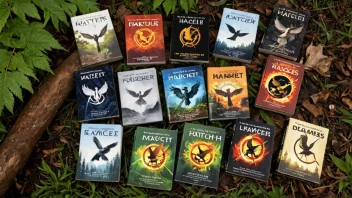In a world that often pressures young children to conform, literature can serve as a powerful tool to celebrate individuality and self-acceptance. Two standout children's books that embody these themes are 'The Dot' by Peter H. Reynolds and 'Stand Tall, Molly Lou Melon' by Patty Lovell. Both stories encourage children to embrace their uniqueness and showcase the beauty of being different. In this article, we will compare these two beloved titles, examining their themes, characters, illustrations, and overall impact on young readers.
Overview of the Books
'The Dot' tells the story of Vashti, a young girl who believes she cannot draw. With a gentle push from her teacher, she learns to express herself through art, ultimately discovering the power of creativity and self-expression. On the other hand, 'Stand Tall, Molly Lou Melon' follows the adventures of a young girl who is small and different from her peers but embraces her unique traits with confidence. Both books convey messages of self-acceptance and encourage children to celebrate who they are.
Themes of Individuality and Self-Acceptance
Both books focus on the core theme of individuality, but they approach it from different angles. 'The Dot' emphasizes the importance of creativity as a form of self-expression. Vashti learns that even a simple dot can be the starting point for something extraordinary. This message resonates with children who may feel pressured to excel in traditional ways.
In contrast, 'Stand Tall, Molly Lou Melon' centers around self-acceptance in the face of adversity. Molly Lou is often teased for her height and unique voice, but she learns to love her differences and stands tall, both literally and metaphorically. This book empowers children to embrace their quirks and view them as strengths.
Character Development
The protagonists of both stories are relatable and inspiring. Vashti, in 'The Dot', starts as a hesitant and insecure child, but through her journey, she evolves into a confident artist. The turning point for her character comes when she learns that her art can inspire others, showcasing a significant arc of growth.
Molly Lou Melon, on the other hand, is depicted as a confident individual from the beginning. Her character embodies resilience and self-love, teaching children to embrace their uniqueness without needing external validation. While both characters promote self-acceptance, Vashti's journey of growth may resonate more with children who struggle with self-doubt.
Illustration and Design
Visual storytelling plays a crucial role in both books. 'The Dot' features simple yet captivating illustrations that reflect Vashti's artistic journey. The use of vibrant colors and creative imagery allows children to engage visually with the story, making it accessible and appealing.
'Stand Tall, Molly Lou Melon' employs a more whimsical style, with lively illustrations that complement Molly Lou's cheerful personality. The colorful depictions of her adventures and the supportive relationships she forms enhance the narrative and reinforce the theme of acceptance.
Target Audience and Age Appropriateness
Both books are suitable for young readers, typically aged 4 to 8 years. 'The Dot' serves as an excellent introduction to the concept of self-expression through art, making it ideal for classroom settings and discussions about creativity. It encourages children to think outside the box and explore their artistic capabilities.
'Stand Tall, Molly Lou Melon', while also appropriate for this age group, speaks more directly to issues of bullying and self-esteem. It is particularly beneficial for children who may feel different or insecure, providing them with a role model in Molly Lou who exemplifies confidence and self-acceptance.
Overall Impact on Young Readers
The impact of both books on young readers is profound. 'The Dot' inspires creativity and encourages children to express themselves, fostering a sense of empowerment through artistic exploration. It serves as a reminder that everyone has the potential to create something beautiful, regardless of their initial doubts.
'Stand Tall, Molly Lou Melon' leaves readers with a powerful message about embracing differences and standing up against negativity. It instills confidence in children, showing them that their uniqueness is something to be proud of rather than something to hide.
Conclusion
In conclusion, both 'The Dot' and 'Stand Tall, Molly Lou Melon' are exceptional children's books that celebrate individuality and self-acceptance. While they approach these themes from different perspectives—one through the lens of creativity and the other through self-love—they both resonate deeply with young readers. 'The Dot' is ideal for sparking artistic expression, while 'Stand Tall, Molly Lou Melon' serves as a beacon of confidence and resilience. Depending on the needs of your young reader, either book can serve as a valuable addition to their literary collection, encouraging them to love themselves just as they are.






